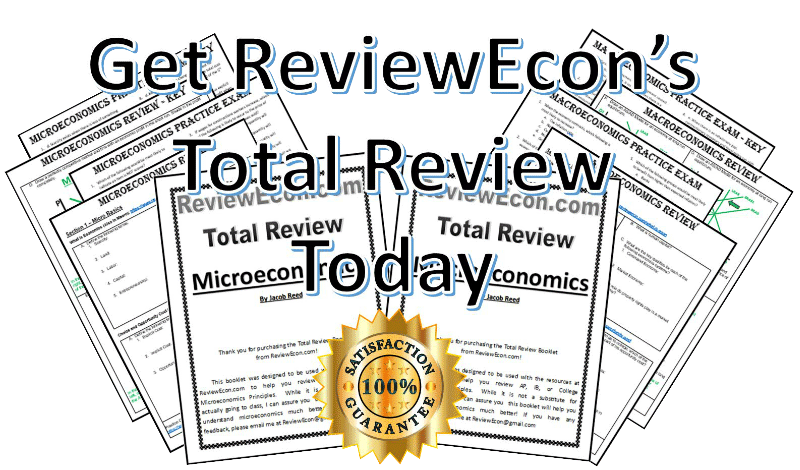A study guide to help make sure you don’t miss any important concepts when you start your review of microeconomics.
Although there are a lot fewer mathematical calculations required for the Advanced Placement Microeconomics exam, a few are guaranteed to show up. Make sure you have all of these formulas memorized and know how to apply them.
There are a lot of Microeconomics graphs to know by test day. Here you will find an overview of the 18 graphs most likely to show up. Remember that you should think about and/or sketch out a graph to answer every question where a graph applies.
Here is a page to see where all the resources on ReviewEcon.com align to the new AP Microeconomics Course Exam Description.
Let’s start at the beginning. This page covers the very foundational concepts of scarcity, resources, choice, basic questions, and economic systems.
An overview of Opportunity Cost, Economic Profit vs Accounting Profit, Total Revenue vs Marginal Revenue along with Total Costs, Average Costs, and Marginal Cost.
Decisions are made at the margin. Learn how proper decision making can help you maximize benefit where MB=MC.
Key concepts you need to know about Production Possibilities Curves.
Everything you need to know about Absolute Advantage, Comparative Advantage, and Terms of Trade.
A short overview of the what supply and demand is along with shifts those curves. This is extremely important and serves as a foundation for the rest of the microeconomics.
An extensive review of how equilibrium is determined and how it changes within a competitive market.
A brief over view on how to find and calculate consumer, producer, and economic surplus along with how to find and calculate deadweight loss.
Everything you need to know about elasticities. Covers coefficients, formulas and different types of elasticity.
Sometimes the government will set prices in a market to solve a social problem; like help the poor, unskilled workers, etc. Those government interventions have a cost that must be considered. This page teaches you what you need to know about those costs.
There is a myth out there that excise taxes are passed entirely to consumers. That isn’t always true. Here you will find out how to determine who actually pays the bulk of the tax. Also, when there are no externalities, excise taxes create an efficiency lost. To see what happens when there are externalities, head to the link below.
Trade protectionism is alive and well, see how tariffs might impact supply and demand as well as producer surplus, consumer surplus, tax revenue, and deadweight loss.
Short review of everything you need to know about utility maximizing consumer behavior with 5 questions on this topic in the best combinations review game.
Breakdown of the four product market structures. Learn the similarities and differences between all four of them.
A Review of game theory and oligopoly behavior along with an activity that covers oligopolies, game theory, and the pay-off matrix. Once you learn how these work, test yourself with this microeconomics activity.
Here you will learn about the law of diminishing marginal returns along with where the demand for labor comes from.
Perfectly competitive factor markets are covered here. Learn how to draw, manipulate, and analyze the graph.
You have heard of monopoly; well this is a monopsony. Instead of one seller, you have one buyer. This is a factor market that has some interesting twists. Learn about it here.
Here is a short review of least cost combinations of resources and profit maximizing combinations of resources.
Everything you need to know about positive and negative externalities including how per unit taxes and subsidies can correct for these market failures.
The Lorenze curve is a graph that helps us illustrate income and wealth inequality. Learn about that graph and how the Gini Coefficient is calculated with that graph as well as how different tax structures impact income inequality.
A review of how to find important points, prices, and quantities found on all of the Advanced Placement microeconomics graphs.
Overview of areas on a micro graphs and an activity that covers all of the shading for microeconomics graphs including supply and demand, market structures, externalities, and tariffs.
